This post is a followup to yesterday's *DTube* video tutorial on "melodic writing in 4-parts," featuring similar/parallel, oblique, and contrary motion. I continue to update the slides of my *YT* channel music theory tutorials, making them easier to read, and so forth (at the time, I was just learning PowerPoint!). To hear the audio that goes with, just watch the aforementioned *DTube* post of yesterday (link in Description below).
MELODIC FOUR-PART WRITING - Harmony I.06 [Slides]
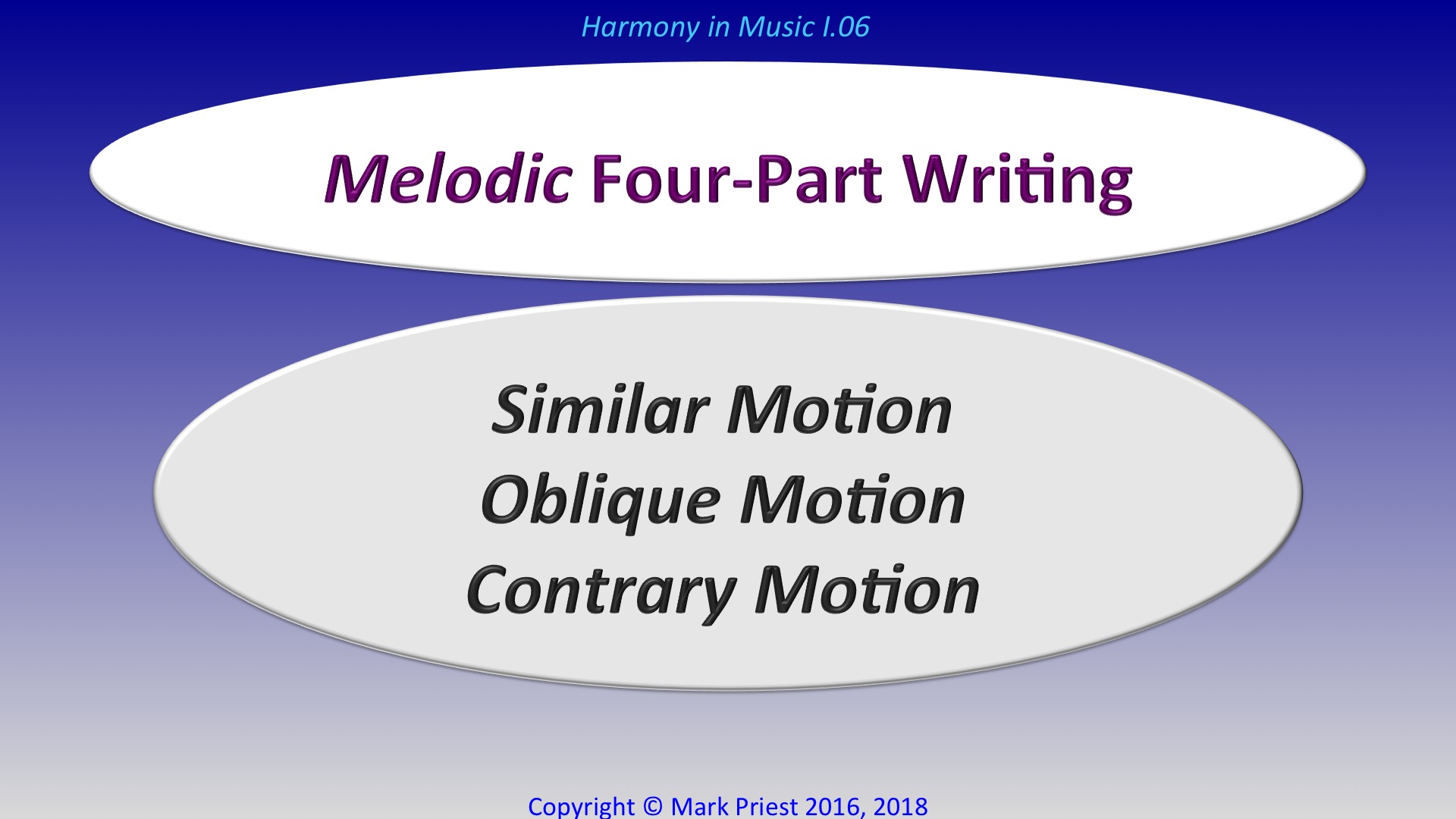
A melody is a memorable, linear series of musical notes – a symbiosis of tone and rhythm – conceived as an aesthetic whole. – Alright, what does all that mean?
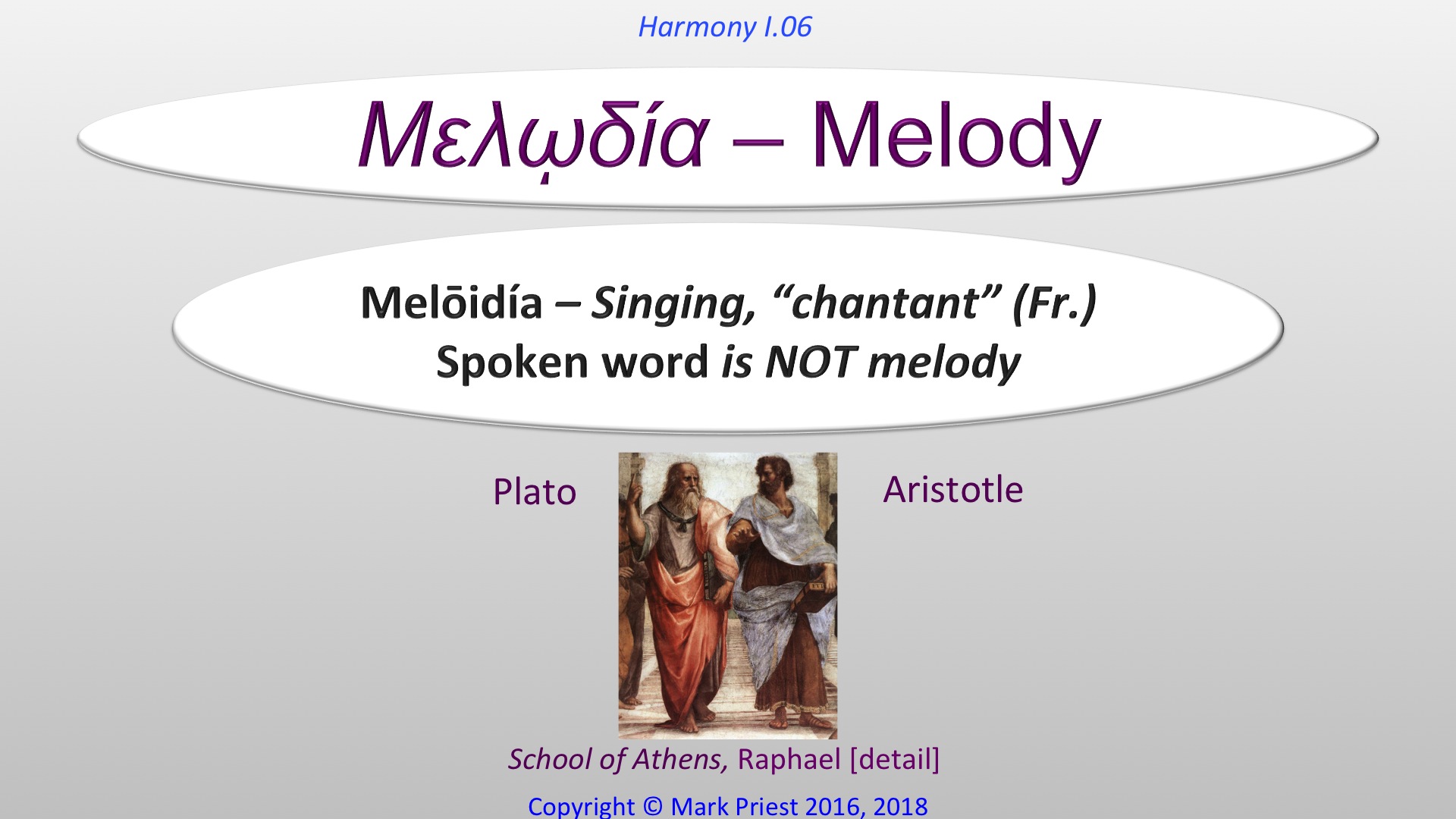
**Greek: *μελῳδία*** - According to the word’s origins in ancient Greece, a *melōidía* is something that is sung, or *chanté*. Some type of melodic motion must be present *in all four parts*, not merely in the soprano voice.
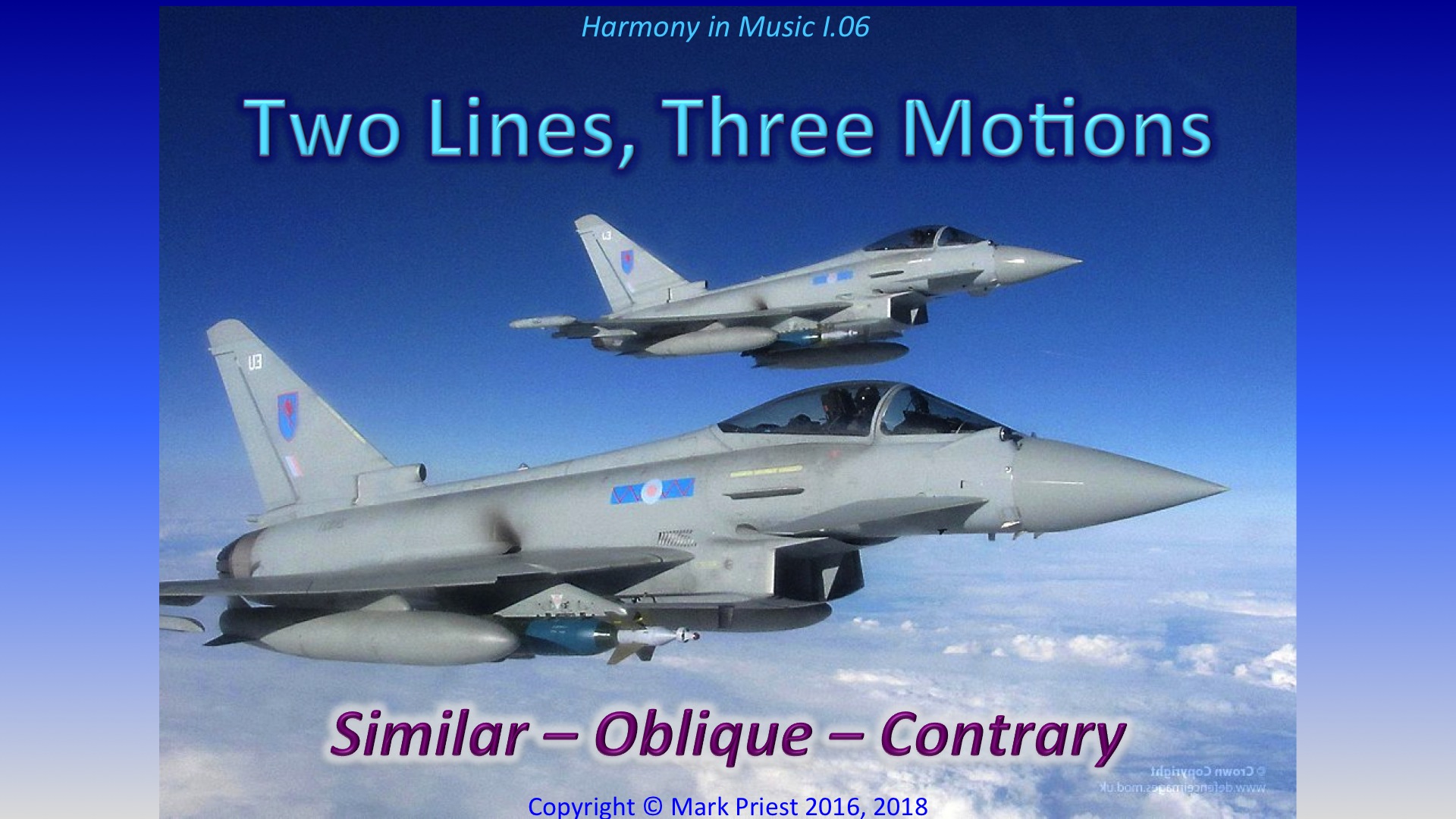
When two musical lines are present at the same time – two melodies, say, a song tune and a bass line – three distinct *Motions* are possible: **1) Similar, 2) Oblique, and 3) Contrary Motion.**
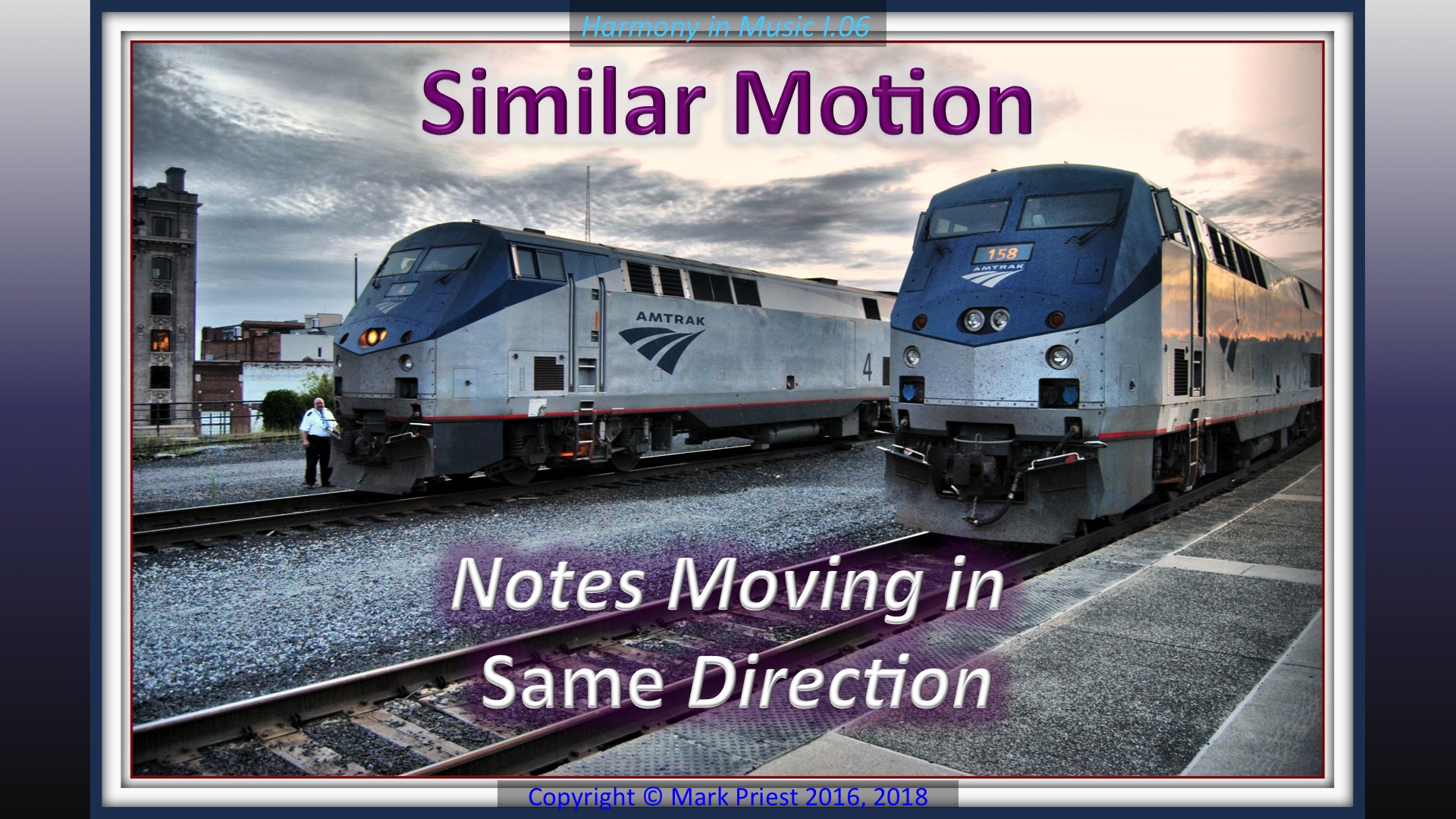
{When} two or more musical lines *move together in the same direction*, it is called **Similar Motion**. Let's talk more about this.
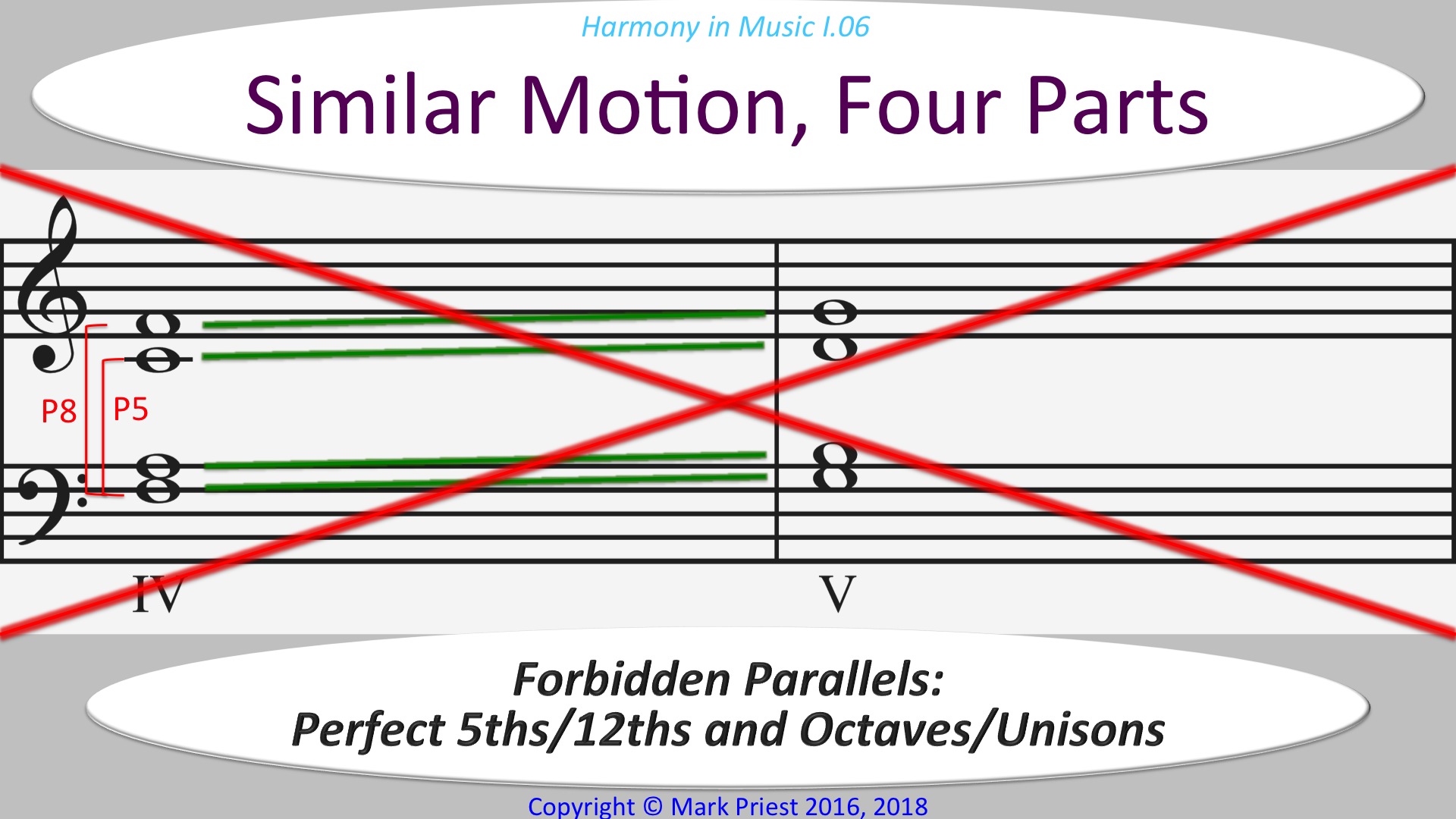
In strict four-part writing, in order to keep the voices *independent* - an important **goal** - we do not allow the writing of parallel octaves [P1/P8] and parallel perfect fifths [P5/P12] between any [two] voices.
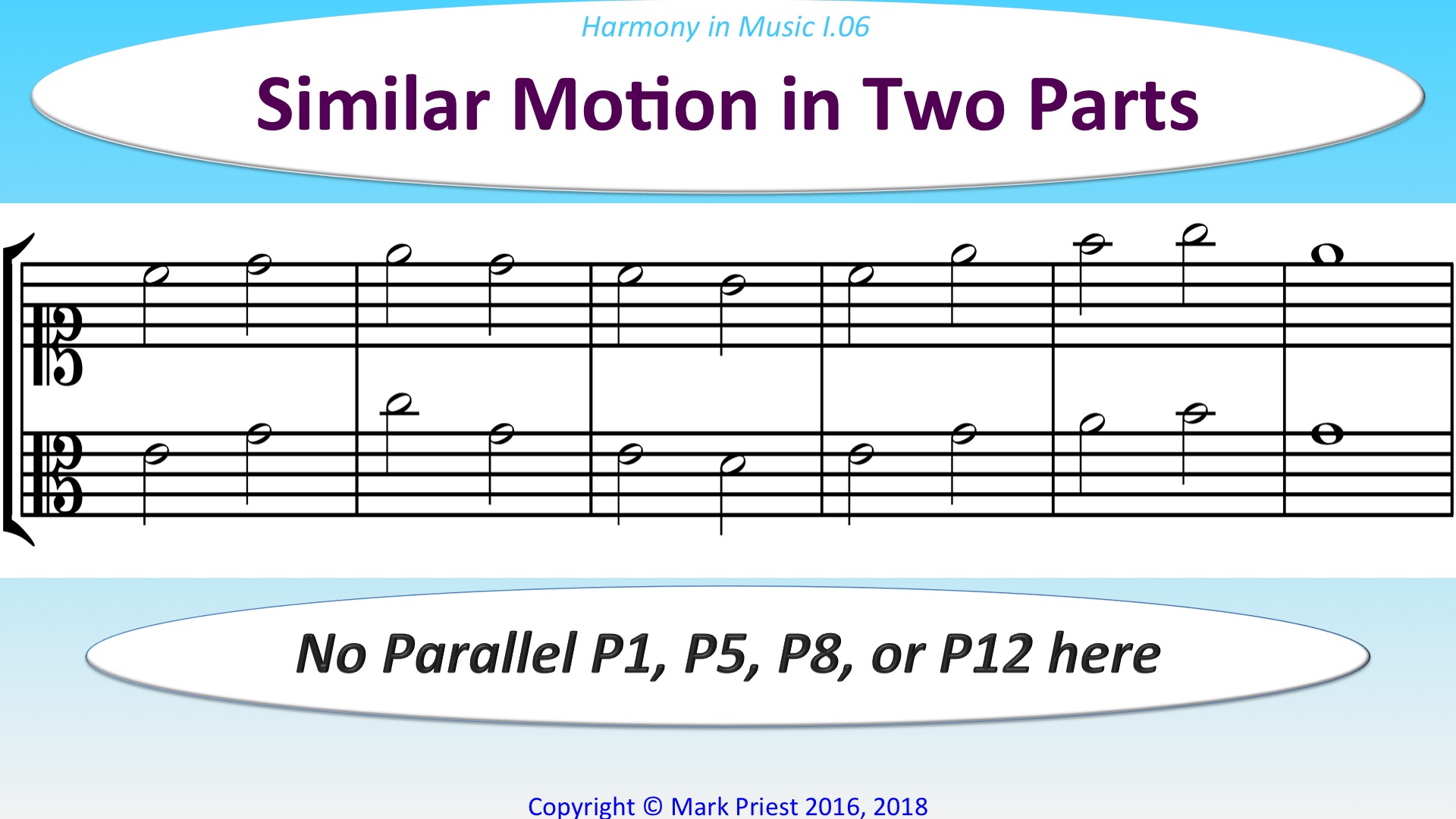
These two voices are moving together properly, in the *same* direction. There are no forbidden parallels here. [*music*] By the way, do you recall the names of the two **C-clefs** pictured here?
Right! That is the *Soprano clef* on the top staff, and *Alto clef* on the bottom.

In this score excerpt, we see *three* voices in similar motion. The intervals or distances between the parts are marked. Listen. [*music*] Not *all* parallel intervals are forbidden; as shown here, parallel 3rds and 6ths, and sometimes 4ths, are acceptable.
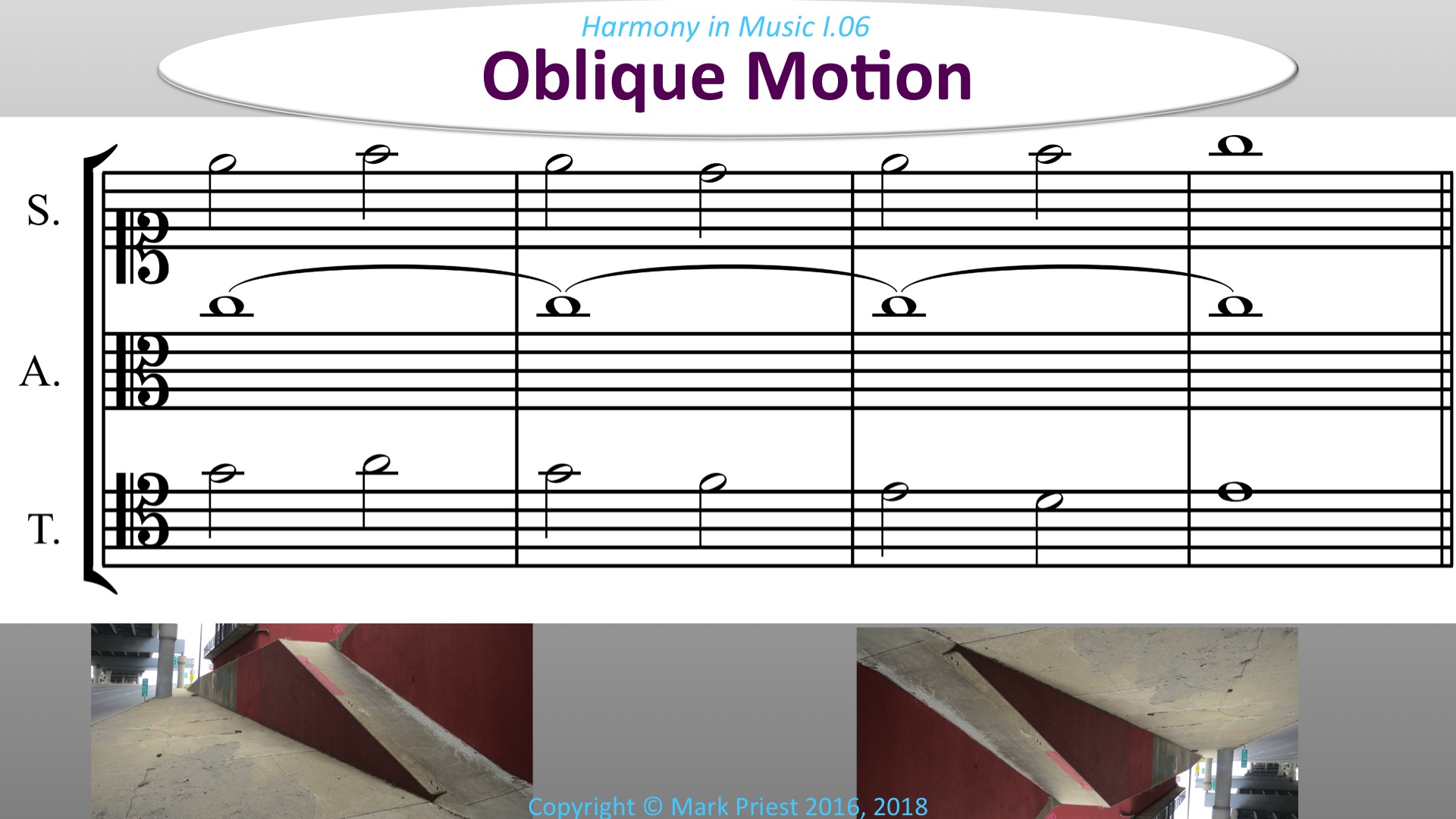
Now we see two musical lines moving up and down, while a third sustains a tone. This is an example of *oblique motion*. The top and bottom lines move obliquely to the middle part. Do you hear the sustained middle line? [*music*]
Incidentally, can you **name all *three* C-clefs** now?
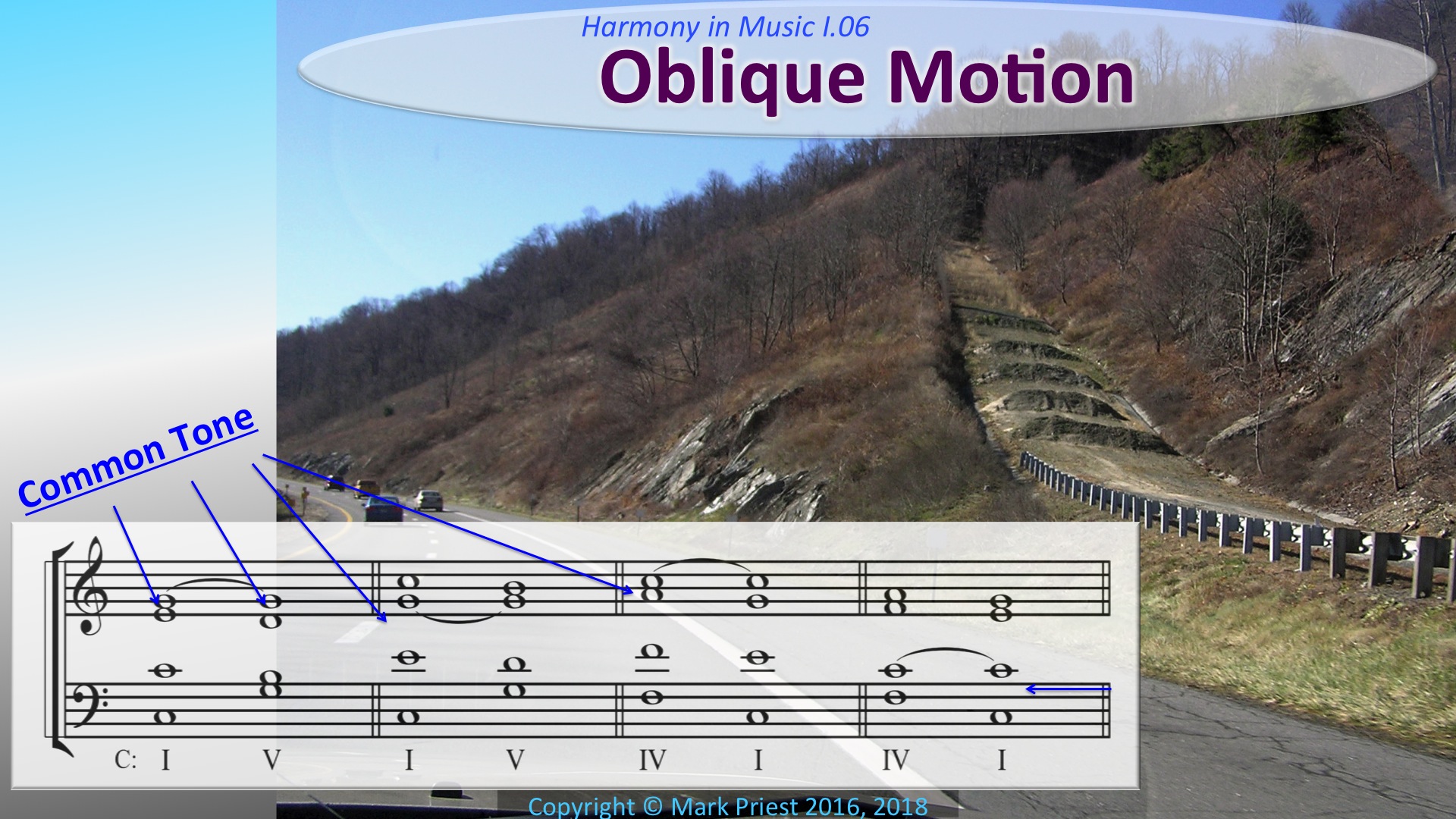
Whenever one voice retains a Common Tone between two chords, there is **Oblique Motion**. Do you hear the common tone to each pair of chords? [*music*]
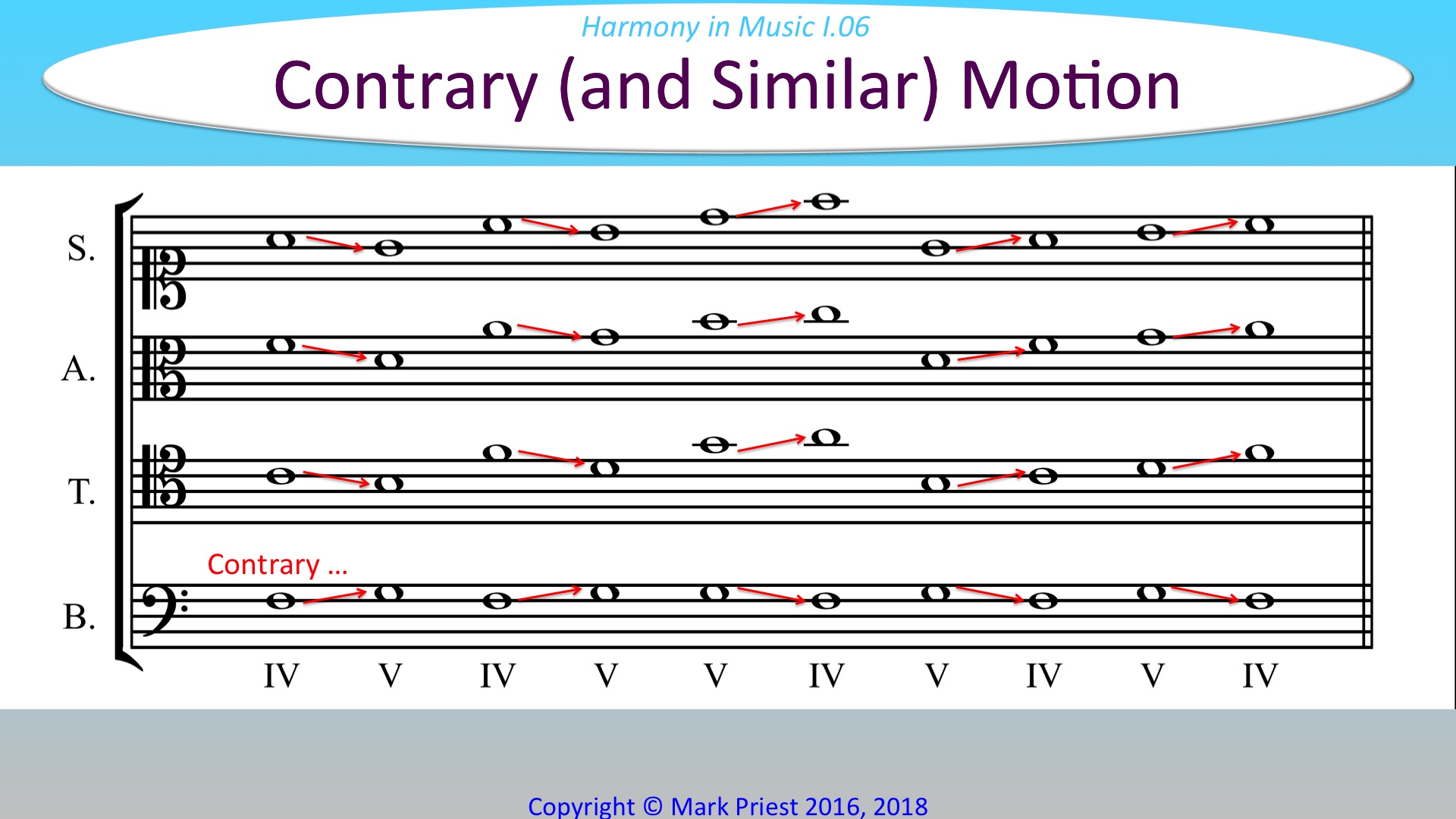
*Contrary* motion was discussed in a previous presentation, under **Rule Four**. The three upper voices shown here move in Similar Motion to each other, but in *Contrary Motion* to the bottom line, the Bass voice. [*music*]
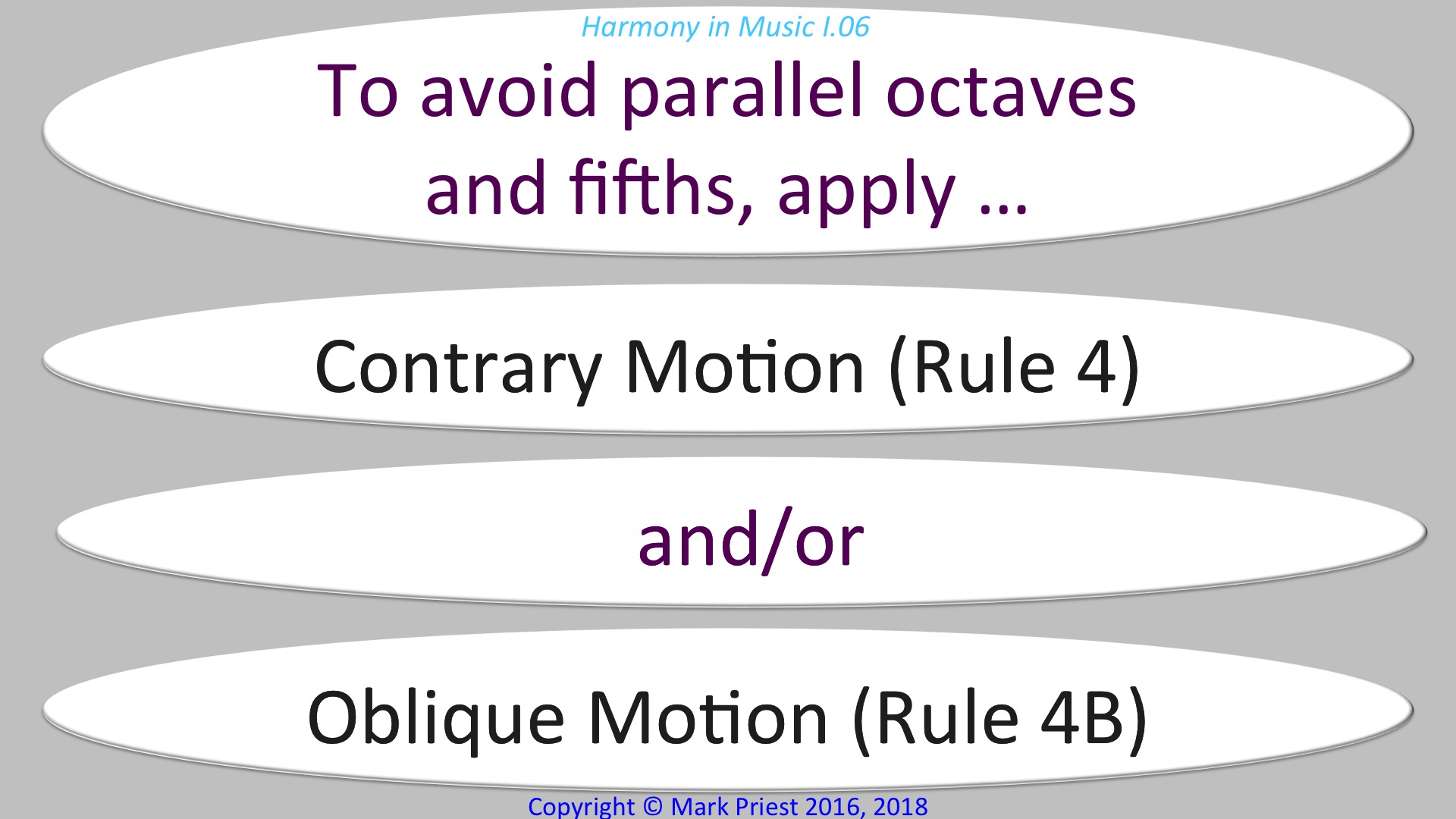
According to **Rule Four**, Contrary Motion and now also Oblique Motion – Rule 4B – are applied in order to *avoid writing parallel-octaves [P1/P8] and parallel-fifths [P5/P12]* between any [two] voices.
Next, something slightly different. …
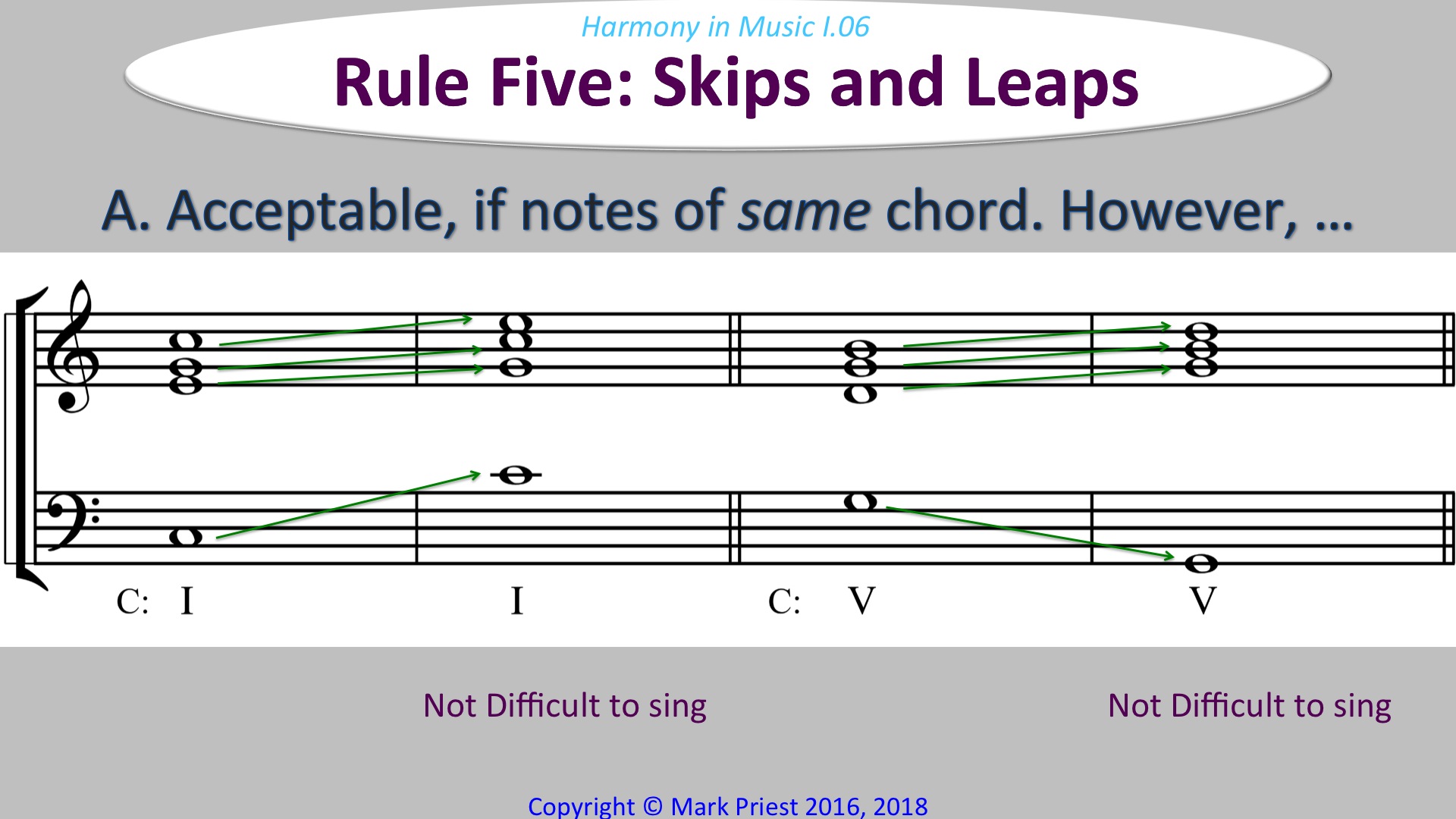
**Rule Five: Skips and Leaps.** When three or four voices move by skips, to notes *in the same chord*, it is acceptable, and easy to sing. [*music*] However, …
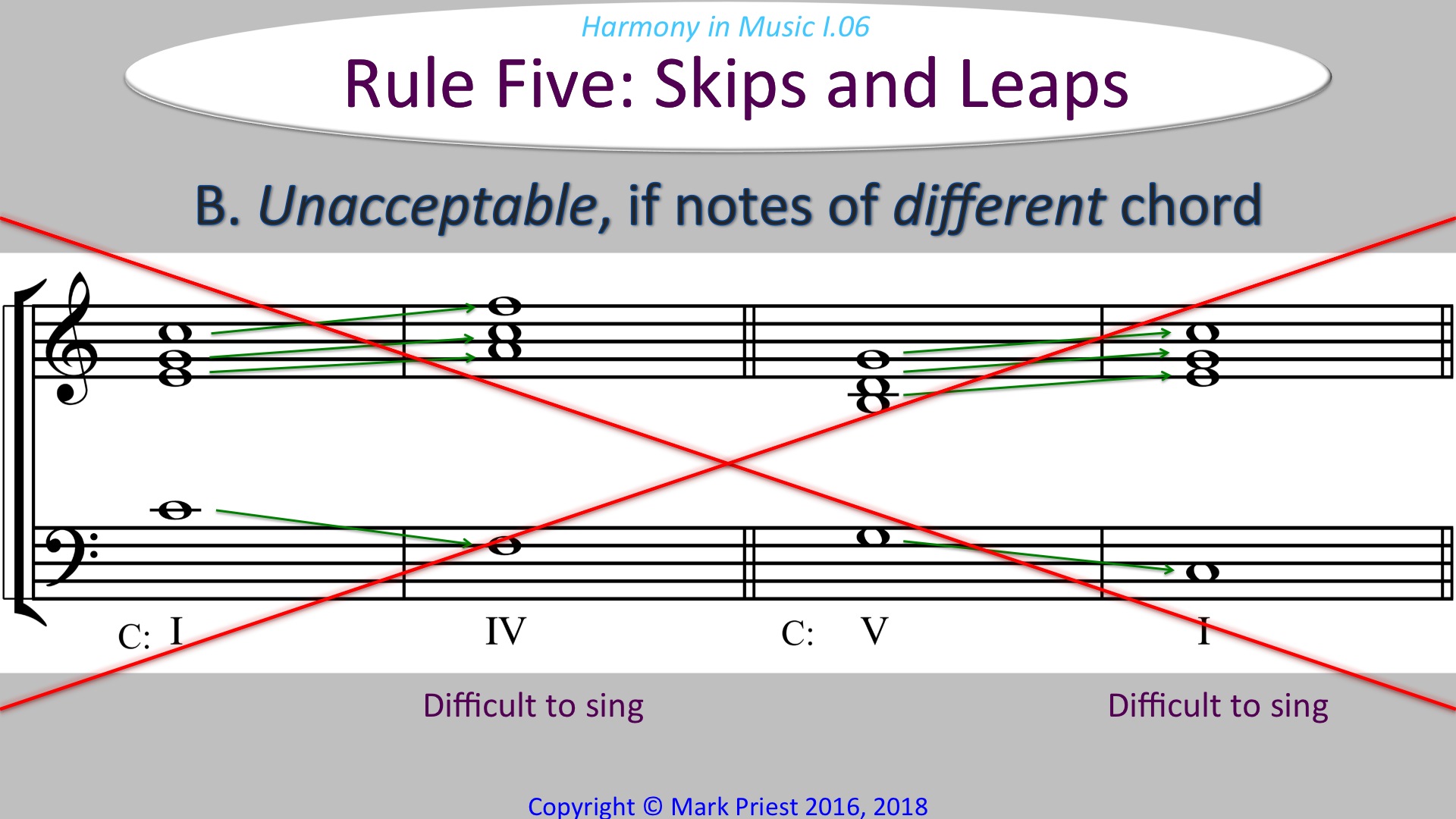
When three or four voices move by skips from one chord *to a different chord*, it is NOT acceptable in strict, four-part writing, neither is it easy to sing. [*music*] Why is this important?
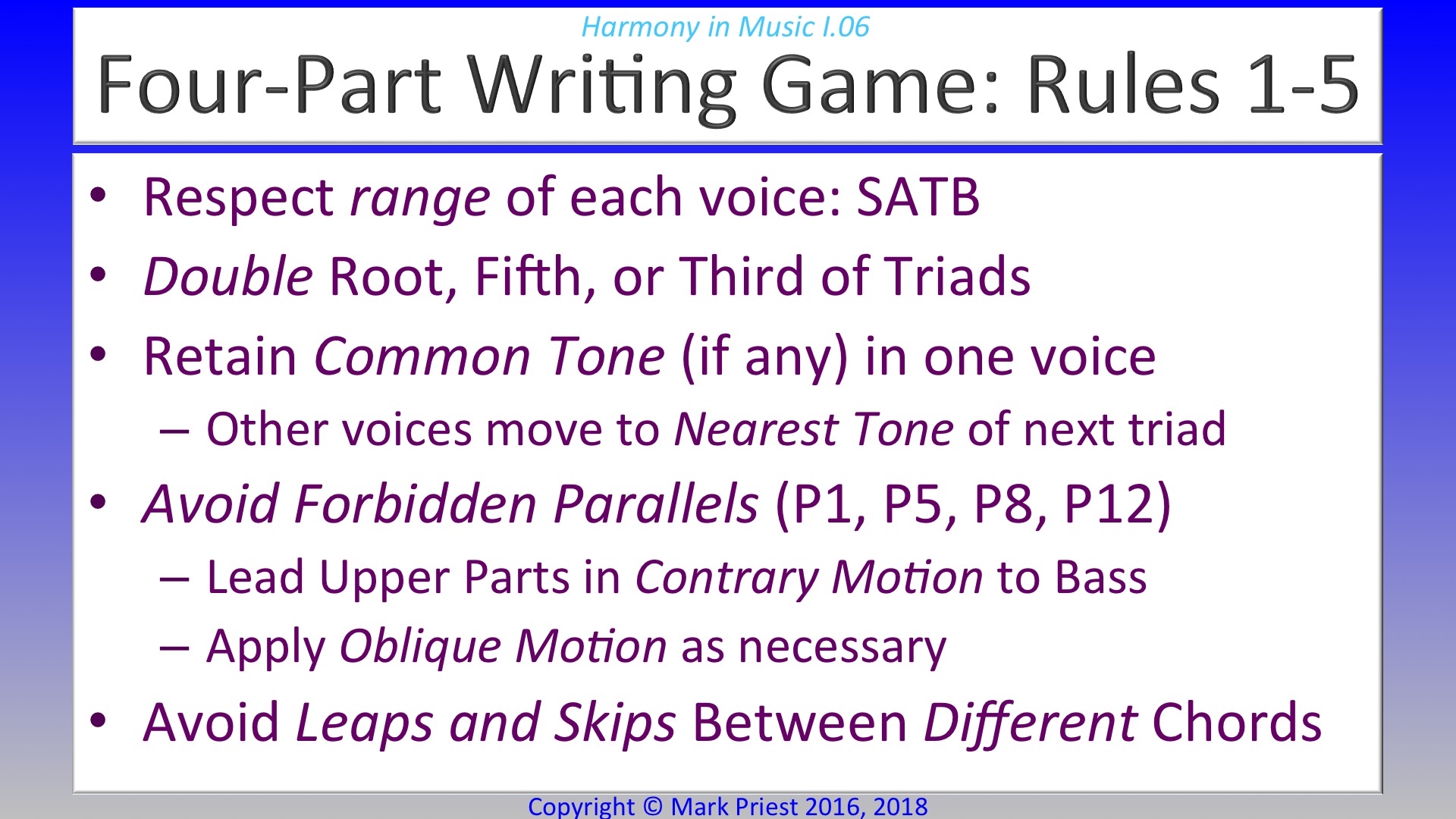
Never forget that these **Five Rules** are teaching you how to produce *independent melodic lines in sing-able harmony for four voice parts*. Oblique and Contrary Motion help us avoid the error of parallel unisons, fifths, octaves, and 12ths, between the voices.
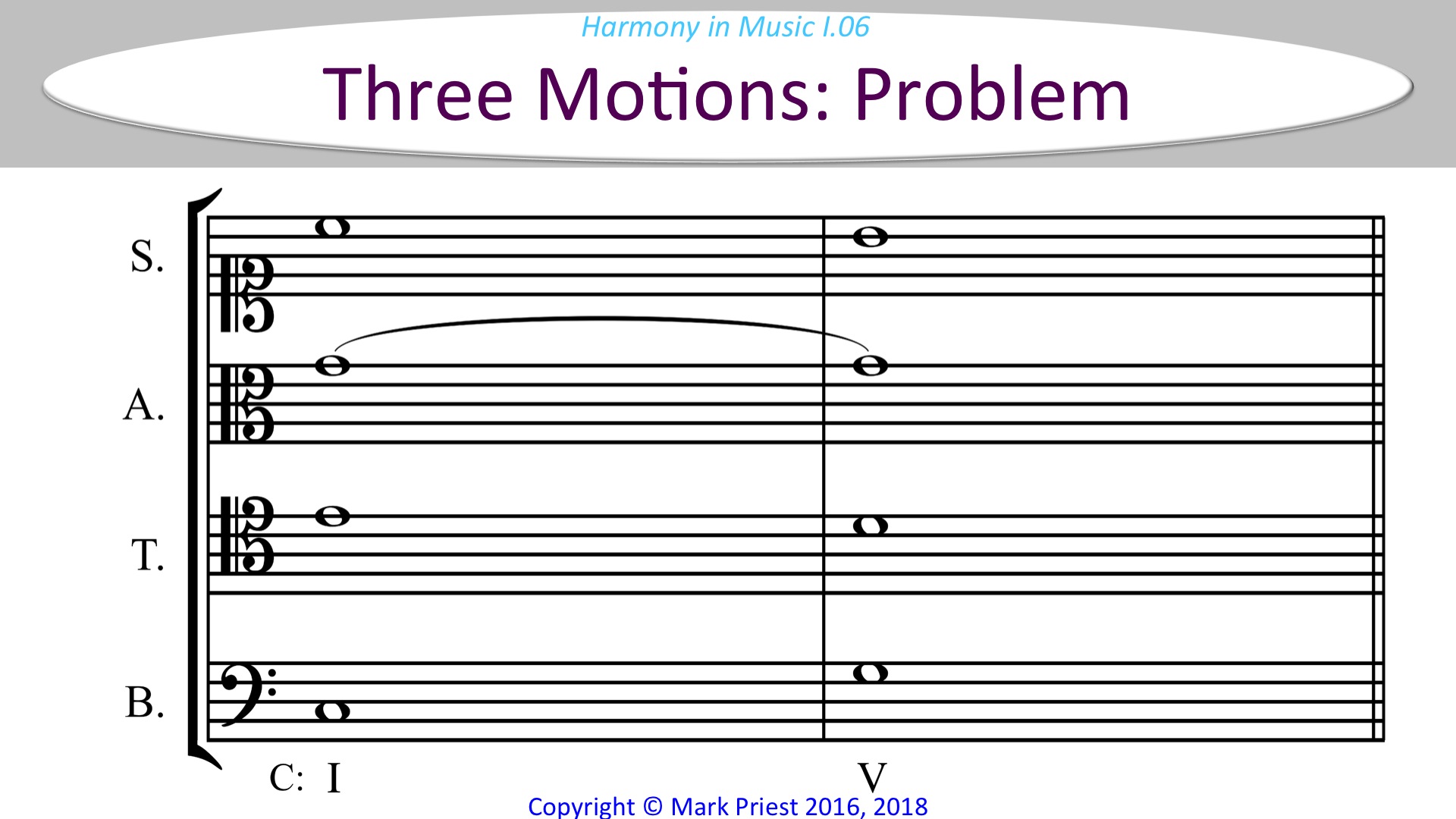
**A Problem.** To reinforce your understanding of the three kinds of motion, here is a task for you: ***Pause the clip***, analyze, and *find all the examples of Similar, Contrary, and Oblique Motion shown here*. [*music*]
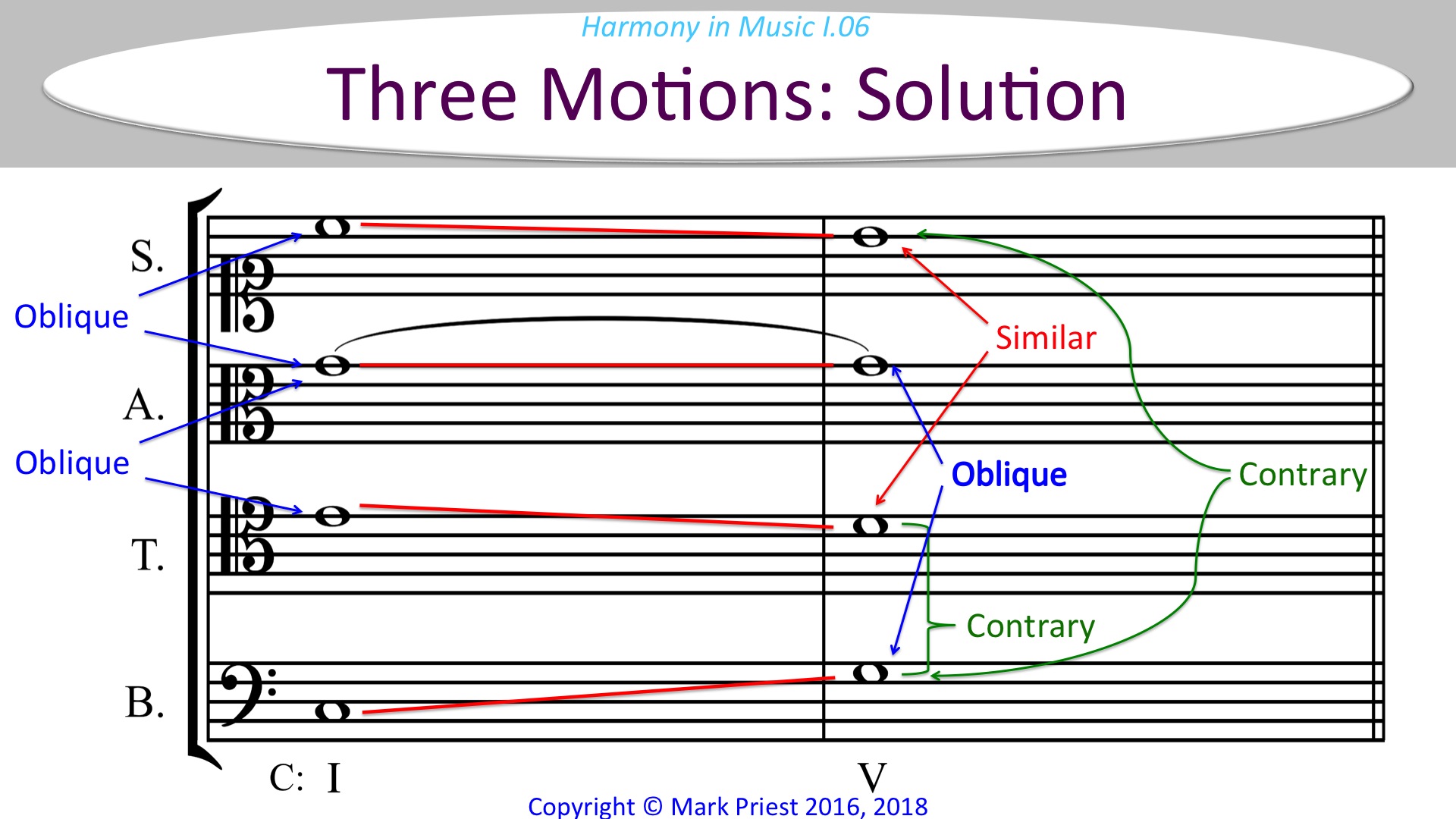
**The Solution.** Soprano and Tenor move similarly to each other – in parallel 6ths, actually – contrary to the Bass, and obliquely to the Alto, which retains the Common Tone to both chords. The Bass also moves obliquely to the Alto. With all that in mind now, listen once more. [*music*]
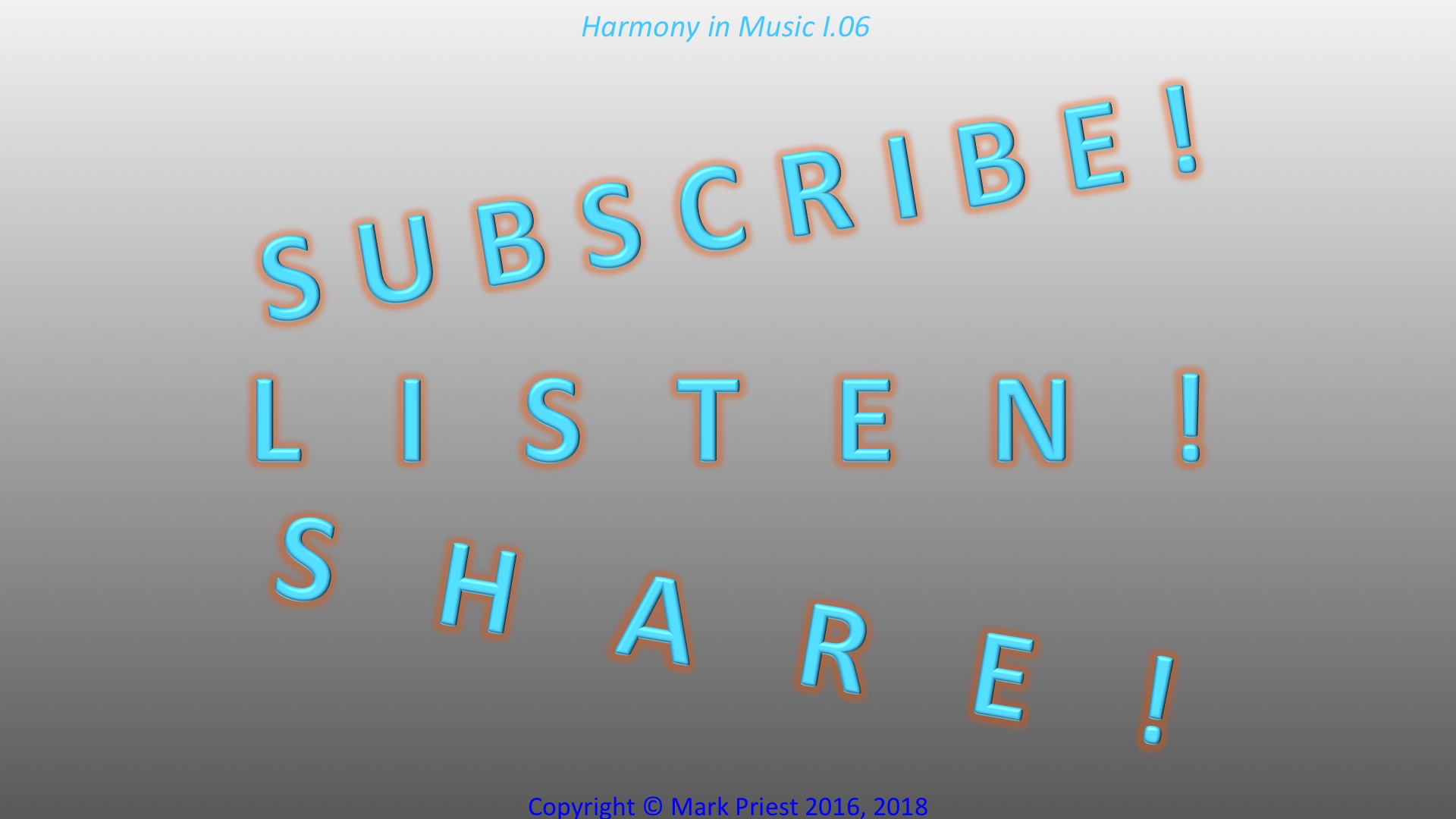
Now which motions do you see? …
Follow, Comment, Upvote, and Resteem this post if you wish.

Food for Thought.
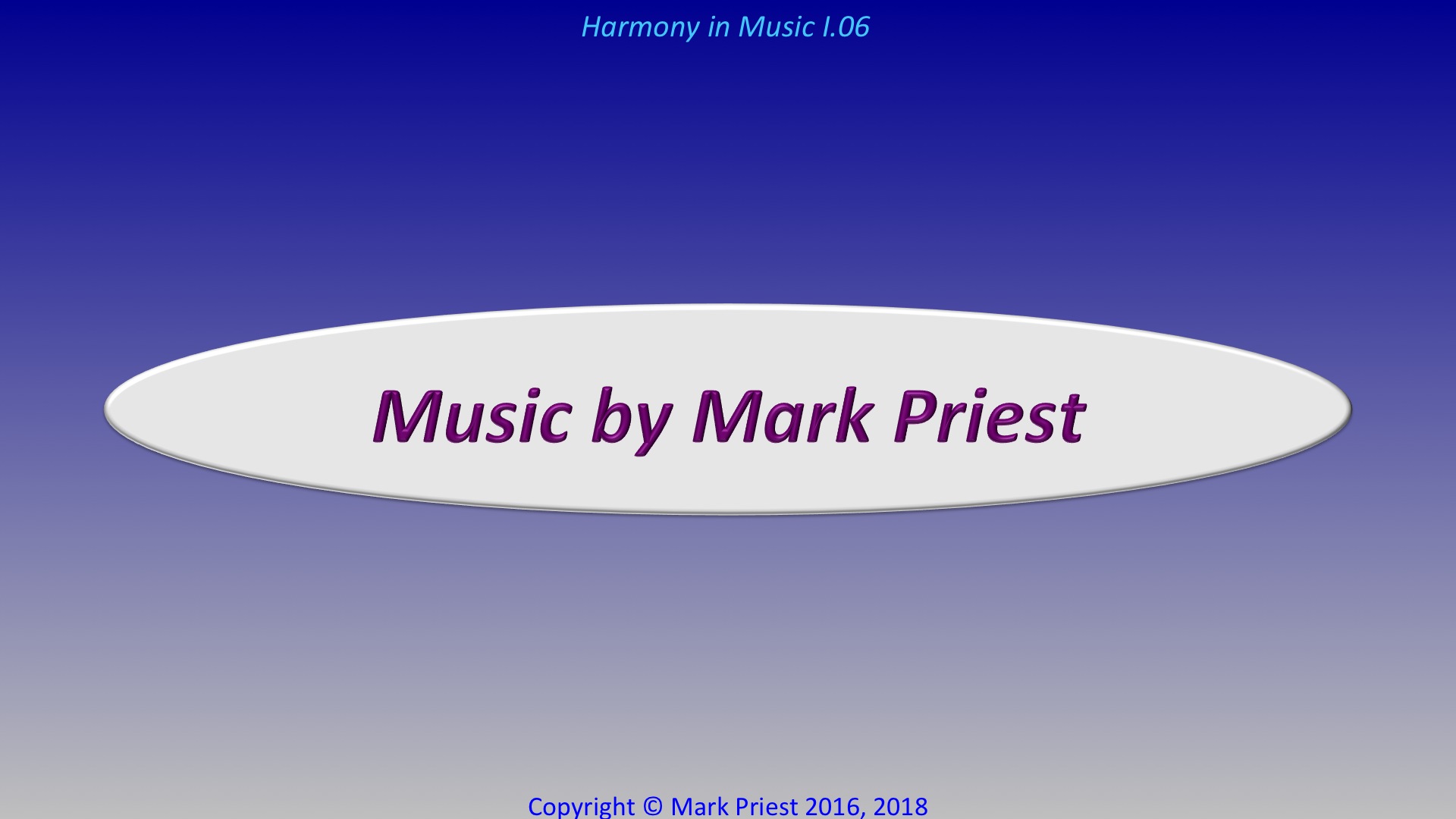
Thank you very much!
WATCH THE *DTube* VIDEO HERE:
https://d.tube/v/monadnock/pdh6irkl
RECOMMENDED VIDEOS AND PLAYLISTS
*Elements of Music* Playlist: https://www.youtube.com/playlist?list=PLr9RYCj11MSycDV5jr07-Sl60ymZyadET
*Music Fundamentals* Playlist: https://www.youtube.com/playlist?list=PLr9RYCj11MSxs91JeTfDvKtilJnOWw6JP
*Harmony in Music* Playlist: https://www.youtube.com/playlist?list=PLr9RYCj11MSwV82yI5x6SbNxmG9CMhfOv
*Piano Beginnings* Playlist: https://www.youtube.com/playlist?list=PLr9RYCj11MSxPncb7aKgf90hnckKuiEhb
IMAGE CREDITS
School of Athens/Raphael, by Image Editor on flickr: https://flic.kr/p/5dJFEM
Royal Air Force Typhoon Aircraft from 6 Squadron, by Defence Images on flickr: https://flic.kr/p/eBQHgE
Amtrak empire builders at Spokane WA, by Loco Steve on flickr: https://flic.kr/p/agxZAF
Runaway truck ramp, by Normanack on flickr: https://flic.kr/p/vyskU
Ramp off Highway 40, by Paul Sableman on flickr: https://flic.kr/p/e7ohZh
Creative Commons License: https://creativecommons.org/licenses/by-sa/2.0/legalcode
Public Domain Mark: https://creativecommons.org/publicdomain/mark/1.0/
HELPFUL REFERENCES
Jadassohn, Dr. Salomon. *Manual of Harmony*, translated from the German by Paul Torek. Breitkopf and Hartel, 1890. A Public Domain work.
Jadassohn, Dr. Salomon. *Elementary Principles of Harmony for School and Self-Instruction.* Breitkopf and Hartel, 1895. A Public Domain work. hiveblocks
hiveblocks